Discovering the remarkable world of the appendix horse reveals a breed that blends the best of both speed and agility. These versatile equines have carved out a unique niche in the realm of horse enthusiasts, offering a compelling combination of traits from two esteemed breeds. This blog post delves into the essence of the appendix horse, exploring its origins, characteristics, and the role it plays in equestrian sports and horse breeding.
Focusing on the Athletic Potential of Appendix Horses
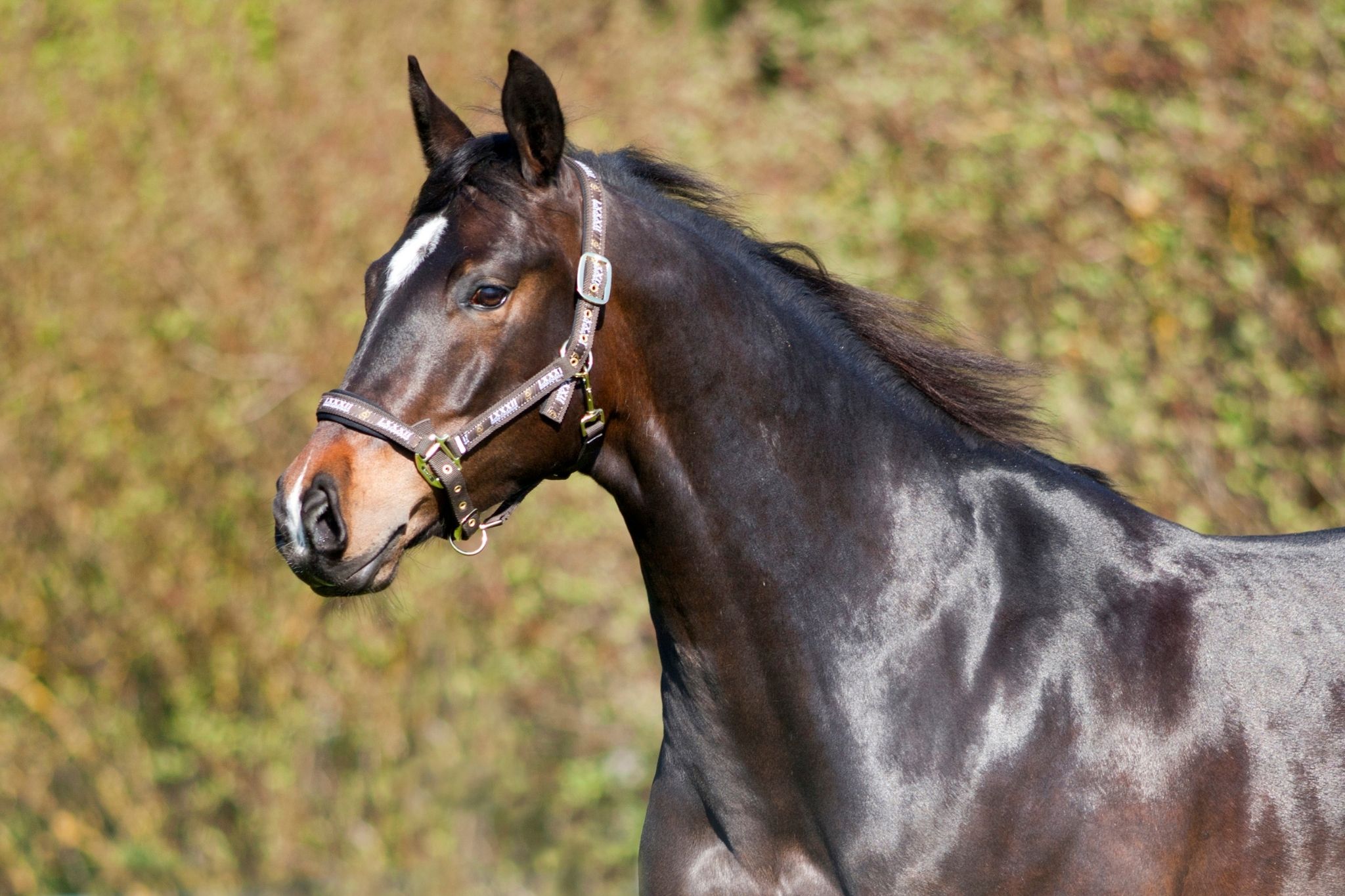
The appendix horse stands out in the equestrian community for its remarkable athletic capabilities. These horses have been developed through strategic breeding to combine the American Quarter Horse’s rapid acceleration with the Thoroughbred’s impressive endurance. Their adaptability across various equestrian disciplines is a testament to their exceptional lineage and the thoughtful breeding practices that have shaped them.
Unique Advantages in Equestrian Disciplines
With a heritage steeped in both agility and endurance, appendix horses offer riders a unique set of advantages across equestrian disciplines. Their physical and mental attributes enable them to tackle the challenges of different sporting events, making them a favorite for riders engaged in multi-discipline competitions.
Key Traits for Competitive Edge
- Endurance and Speed: The genetic makeup of appendix horses gifts them with a harmonious mix of endurance for long-duration events and speed for quick sprints.
- Cognitive Abilities: Renowned for their intelligence, appendix horses are quick learners, adept at performing in sports that demand mental agility such as eventing.
- Agility: Their physical dexterity is ideal for events that require nimble movements, like show jumping, enhancing their competitive edge.
Strategic Breeding for Optimal Performance
The focus for breeders of appendix horses is to create individuals that excel in the demanding landscape of equestrian competitions. By carefully selecting American Quarter Horses and Thoroughbreds with desirable traits, they work to cultivate offspring that embody the pinnacle of athletic performance. This selective breeding ensures that appendix horses are well-equipped to meet the expectations of competitors and enthusiasts alike.
Versatility Across Equestrian Events
Exemplified by their performance in a variety of competitions, appendix horses demonstrate their versatility and skill. They are adept at:
- Competing in rodeo events, where their agility and speed are crucial.
- Excelling in English riding disciplines, where their poise and endurance shine.
- Participating in endurance riding, where their durability is essential.
Through these abilities, appendix horses have established themselves as versatile athletes, pushing the boundaries of what can be achieved in the realm of equestrian sports.
The Future of Equestrian Excellence
The success of the appendix horse in various equestrian disciplines is not only a nod to historical breeding achievements but also a guiding principle for future breeding strategies. With evolving competition demands, the approach to horse breeding is continually adapting, using the appendix horse as a model for creating breeds that can rise to the occasion and excel in the equestrian sports of tomorrow.
Insights into the Distinctive Characteristics of the Appendix Horse Breed

The appendix horse breed exemplifies the innovation in equine breeding, highlighting a combination of physical and mental strengths. As a result of intentional crossbreeding, these horses meet the dynamic needs of riders and competitors in equestrian sports. The breed’s development underscores an equine with superior qualities, thanks to the strategic merging of its parent breeds.
Harmonious Physical Traits for Competitive Sports
Observing the appendix horse, one can appreciate its stunning beauty and robustness. The breed’s physique is a balanced mix of its parent’s features, providing it with the athleticism required to perform admirably in diverse equestrian events. Not only does their conformation enhance their competitive abilities, but it also contributes to their aesthetic appeal, which is celebrated among horse enthusiasts.
Cognitive Excellence and Emotional Stability
Equally important are the mental attributes of appendix horses. Their intelligence and amiable disposition stem from their lineage, resulting in a horse that excels in both learning and performance. The psychological profile of these horses makes them a preferred choice for equestrians who prioritize a horse’s mental agility and willingness to cooperate.
Adaptable Physique for Varied Disciplines
Appendix horses display a significant range in height, generally standing between 14.3 and 16 hands. This size variability allows them to cater to different sporting requirements, with taller horses being ideal for disciplines such as show jumping, while more compact ones may perform better in events that demand agility and tight maneuvers.
Diverse Coat Colors Enhancing Breed Appeal
The breed’s vast coat color spectrum, from common shades like bay and chestnut to rarer hues such as black and palomino, illustrates its rich genetic background. This color variety enhances the breed’s allure and provides riders with a personal choice when selecting an appendix horse for competition or leisure pursuits.
Ultimately, the appendix horse breed stands as a symbol of equine perfection, combining desirable physicality, mental sharpness, and visual charm. These horses not only fulfill but surpass the expectations set by the equestrian community, offering an unmatched experience in both versatility and performance.
Enhancing the Appendix Horse Breed through AQHA Stewardship
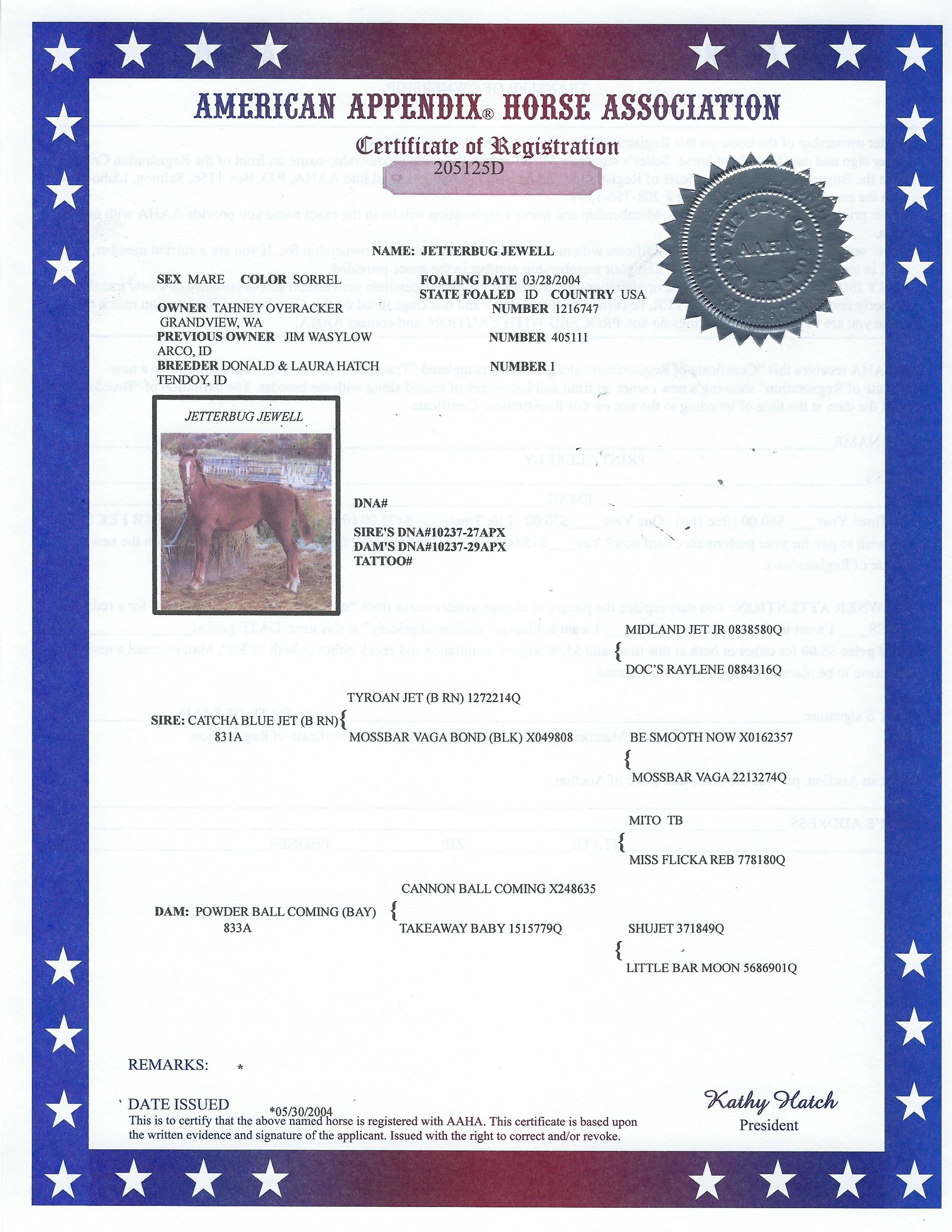
The American Quarter Horse Association (AQHA) has a pivotal role in the development and recognition of the appendix horse breed. By enforcing a comprehensive set of breeding standards, the AQHA ensures that each horse registered as an appendix retains the breed’s distinct qualities while promoting advancements in equine breeding.
Stewardship and Preservation of the Appendix Horse by AQHA
As the steward of the breed’s heritage, the AQHA provides a clear framework for the physical and performance attributes that define an appendix horse. These criteria are essential for maintaining the breed’s unique identity and facilitating its progression in line with the association’s goals for the equine sector.
Registration Integrity and Performance Standards
For an appendix horse to be registered with the AQHA, it must descend from registered American Quarter Horse and Thoroughbred parents. The AQHA’s thorough validation process includes:
- Examining the horse’s pedigree for accuracy.
- Confirming the display of the breed’s defining traits.
- Meeting the AQHA’s benchmarks for performance.
A successful evaluation results in the issuance of a distinctive “X” number to the horse, affirming its pedigree and its qualification for AQHA events.
Guiding Breeders Towards Excellence
Breeders aiming to produce top-tier appendix horses turn to the AQHA for direction. The association significantly shapes breeding choices, encouraging breeders to pursue programs that reflect the AQHA’s standards. Educational efforts by the AQHA also inform breeders about essential breeding practices and the importance of genetic health in enhancing the breed’s characteristics and conformation.
Detailed Registration Procedure for Quality Assurance
The AQHA’s registration protocol for appendix horses is a diligent process that ensures the breed’s high quality. Prospective registrants must:
- Complete an application with the horse’s genealogical details.
- Undertake DNA testing, when necessary, to authenticate parentage.
- Comply with the physical and performance requirements established by the AQHA.
Inability to satisfy these prerequisites may lead to registration denial, underscoring the AQHA’s dedication to breed excellence.
Investment in Genetic Improvement and Breeder Education
The AQHA is actively involved in genetic research and providing educational programs that benefit the appendix horse breed. Efforts include:
- Addressing and reducing the incidence of genetic disorders within the breed.
- Educating breeders on ethical breeding methods.
- Fostering the production of horses that are not only competitive but also genetically robust.
This commitment contributes to the breed’s ongoing health and sustainability for future generations.
Ongoing Resources and Support for the Breeding Community
With a variety of learning tools available to breeders, such as workshops, online courses, and literature, the AQHA ensures that breeders have access to the latest insights and practices in horse breeding. These resources are vital for breeders who aim to stay ahead in creating horses that adhere to the evolving AQHA standards.
In essence, the stringent criteria and active governance of the American Quarter Horse Association are instrumental in fostering and maintaining the esteemed characteristics of registered appendix horses, cementing their reputation as a breed that embodies both athleticism and elegance.
The Evolution of Crossbred Equestrian Champions
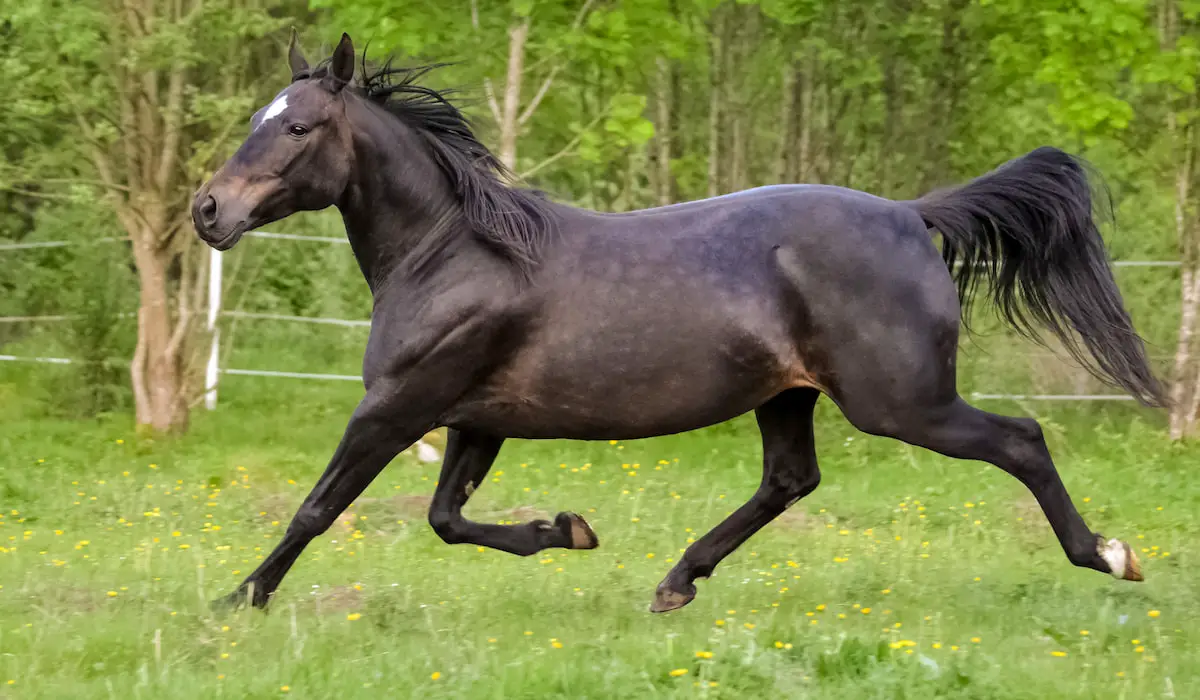
The development of the appendix horse has resulted in a breed that possesses qualities ideal for competitive equestrian disciplines. This crossbreed is an embodiment of hybrid vigor, with its lineage deriving strength, resilience, and versatility from its American Quarter Horse and Thoroughbred ancestors. These horses are renowned for their capability to withstand the rigors of various equestrian sports due to their genetically inherited advantages.
Refined Crossbreeding for Excellence in Competition
Appendix horses are the product of selective crossbreeding, designed to enhance the competitive attributes necessary for success in equestrian sports. They inherit the Quarter Horse’s explosive speed and the Thoroughbred’s lasting stamina, resulting in a breed that excels in competitive settings. Breeders are focused on optimizing these traits to produce appendix horses that are formidable contenders in a wide range of equestrian events.
Dynamic Conformation and Mental Agility
The conformation and mental agility of the appendix horse lend themselves to high-performance across diverse equestrian disciplines. This breed has proven to be an invaluable asset in events that demand both rapid acceleration and agility, such as barrel racing, and the versatility to master the complexities of eventing, from dressage finesse to cross-country stamina and show jumping precision.
- Barrel Racing: In barrel racing, the appendix horse’s agility and powerful launch are perfectly suited to the event’s fast-paced and sharp-cornered nature.
- Eventing: The multifaceted nature of eventing highlights the appendix’s capacity to excel in varied challenges, emphasizing its adaptability and well-rounded skill set.
Celebrating the Cognitive Edge of Crossbred Equines
The physical prowess of the appendix horse is complemented by its mental sharpness, making it a distinguished member among hybrid horse breeds. The breed’s intelligence and trainability are invaluable in the competitive landscape, where mental adaptability is as crucial as physical ability. These traits contribute to the appendix horse’s reputation as a versatile and responsive partner in all levels of equestrian sports.
Advantages of Enhanced Genetic Diversity
The crossbreeding that gives rise to the appendix horse also promotes genetic diversity, which can result in a healthier and more resilient breed. This genetic variation contributes to a robust constitution and may diminish the incidence of certain genetic diseases prevalent in purebreds. The resulting health benefits not only improve the breed’s longevity but also secure its place in the future of equestrian sports.
Charting the Path for Future Equestrian Athletes
As the landscape of equestrian sports continues to change, there is an increasing demand for horses that can adapt and excel in new competitive environments. The appendix horse is poised to meet these future challenges, thanks to its quarter horse thoroughbred cross origin. Breeders remain committed to enhancing the breed’s qualities, ensuring that the appendix horse will continue to be a benchmark for excellence and adaptability in the equestrian world.
Optimizing Performance in Racing Quarter Horses
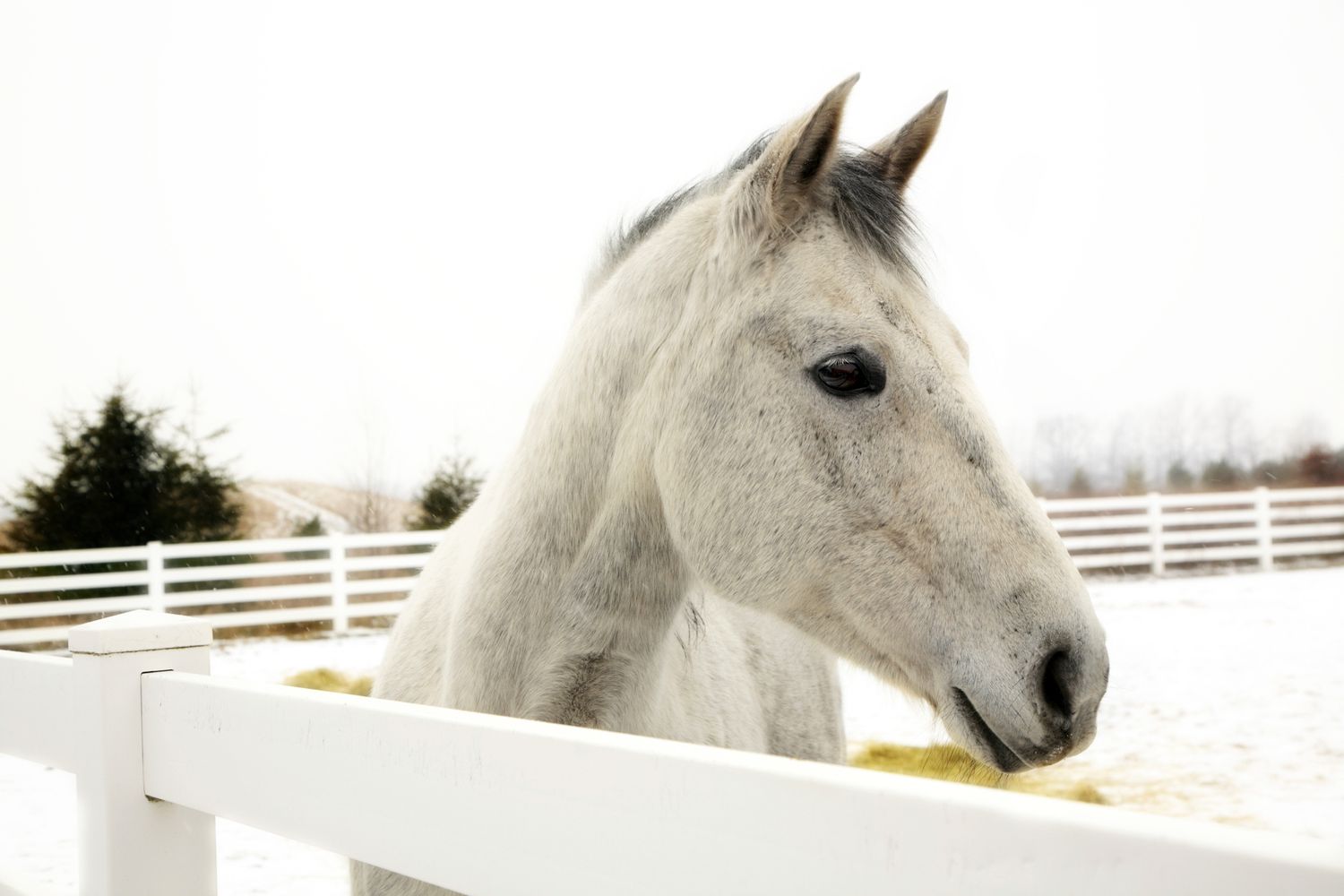
The athleticism of appendix quarter horses is a testament to their prowess on the racing circuit. These horses benefit from targeted training programs that aim to amplify their natural strengths, preparing them for the intense competition of quarter horse races. By focusing on enhancing their muscular power and cardiovascular resilience, trainers ensure these equines are primed for top-level performance.
Specialized Training for Peak Athleticism
Training an appendix quarter horse involves a blend of exercises to boost both speed and stamina. These customized regimens may incorporate techniques like sprint work, interval training, and distance runs, all tailored to marry the Quarter Horse’s quickness with the Thoroughbred’s stamina for peak racing condition.
Comprehensive Conditioning Strategies
Preparing for race day involves more than just physical training. It encompasses a holistic approach that includes a carefully crafted diet, adequate rest, and strategies for mental preparation. Ensuring that the horse is well-nourished, rested, and mentally attuned to the racing environment is essential for optimal performance.
Recognizing Racing Quarter Horse Achievements
The racing landscape has been graced by several appendix quarter horses whose stellar performances have solidified their place in the sport’s history. These athletes exemplify the capabilities of the appendix breed, with their record-breaking speeds and accumulation of titles.
- Record-Breaking Performances: Celebrating appendix quarter horses that have set new racing benchmarks, highlighting their competitive prowess.
- Consistent Excellence: Appendix quarter horses that have earned multiple titles are recognized for their sustained success on the track.
Enhancing Training with Modern Advances
Training methodologies for racing quarter horses are ever-evolving, with technological and scientific advancements contributing to more sophisticated approaches. These modern techniques are geared towards maximizing the appendix horse’s potential while minimizing the risk of injury, setting new standards for race performance.
Sustaining the Racing Quarter Horse Legacy
The legacy of the appendix quarter horse in racing is a reflection of the concerted efforts of trainers, breeders, and caretakers dedicated to the breed’s success. Their commitment ensures that the qualities of the appendix horse are not only showcased but also passed down to future generations, securing their place in the annals of racing history.
Advancing the Legacy of the Racing and Sport Horse
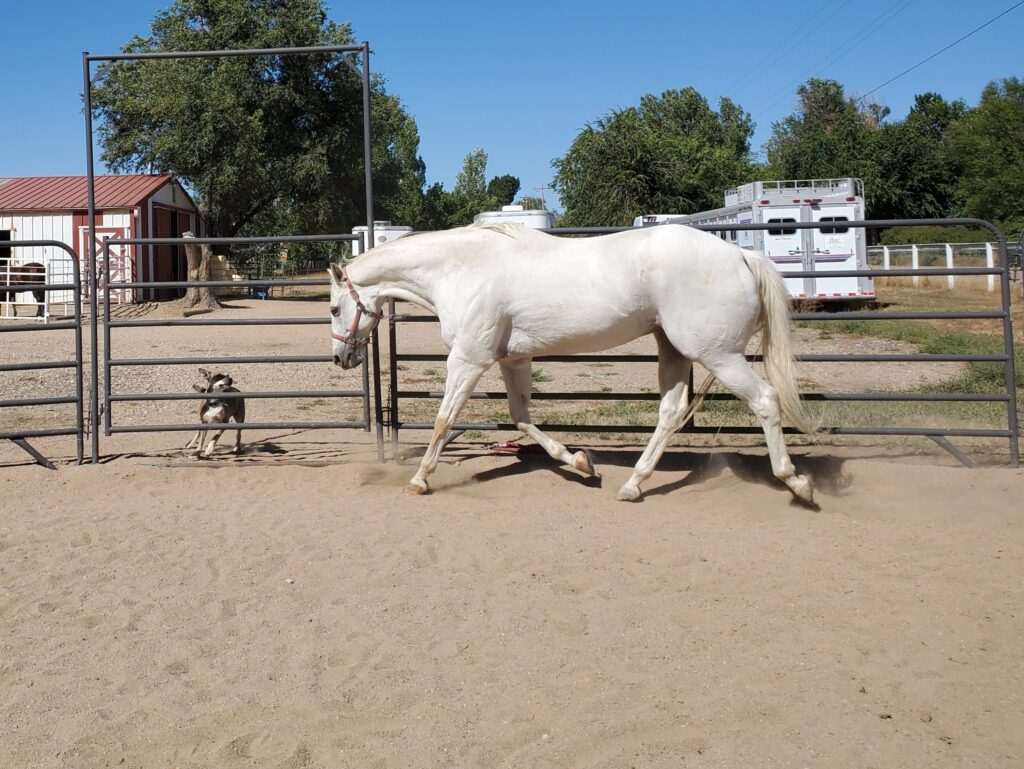
Through intentional breeding strategies, equestrians have successfully created the appendix horse, a hybrid that showcases the speed of the Quarter Horse and the endurance of the Thoroughbred. This breed has been specifically developed to meet the multifaceted demands of the racing and sports arenas, marking a significant milestone in equine performance.
Refining Breeding Strategies for Equestrian Adaptability
Breeding appendix horses involves a disciplined approach, selecting for qualities that ensure success in both speed and versatility. The focus is on achieving a balance of physical and mental traits that contribute to a horse’s aptitude in various equestrian sports, without compromising on the breed’s integrity or health.
Ensuring a Strong Genetic Foundation
Responsible breeding practices are crucial for preserving the appendix horse’s genetic health and preventing the concentration of undesirable traits. Breeders are vigilant in maintaining a wide genetic pool, which is fundamental for the long-term viability of the breed.
Technological Advances in Equine Reproduction
The field of equine reproduction has seen significant advancements, providing breeders with state-of-the-art tools to enhance the breeding process. These include modern reproductive techniques that allow for the exchange of genetic material across vast distances, thus contributing to the breed’s genetic diversity and excellence.
Maintaining Pure Bloodlines
Accurate record-keeping is essential for preserving the appendix horse’s pure lineage. By documenting the ancestry of each horse, breeders can ensure the continuation of the breed’s distinguished characteristics for future sporting prospects.
Adapting Breeding to Meet Future Demands
The landscape of horse breeding is dynamic, with practices constantly evolving to align with the changing requirements of equestrian sports. Breeders of the appendix horse are at the forefront of this evolution, continuously modifying their methods to produce equines capable of surpassing the expectations of the equestrian community.
Guiding Breeders towards Future Innovations
The guidance provided by breed associations, notably the AQHA, is integral to the progression and preservation of the appendix horse breed. These organizations establish breeding standards and offer support to breeders, ensuring the sustainability of the breed’s esteemed qualities in the competitive equestrian domain.
Nurturing and Sustaining the Appendix Horse’s Well-being
The care regime for appendix horses encompasses a comprehensive approach that caters to their distinct health, dietary, and grooming needs. To achieve peak physical condition, owners and caretakers must be knowledgeable and proactive, adopting best practices tailored for these equine athletes. Understanding their specific requirements is key to enhancing their performance and longevity.
Addressing Nutritional and Dietary Requirements
Providing a balanced diet for an appendix horse is critical to support their high energy demands and muscle development. Essential elements of their nutrition include:
- Quality forage: Vital for digestive health and essential fiber intake.
- Energy-rich feeds: Such as grains and specialized equine products that deliver extra calories necessary for highly active horses.
- Supplements: To ensure an optimal balance of vitamins and minerals, addressing any nutritional deficiencies.
- Hydration: Continuous access to clean water is imperative, particularly after strenuous activities, to avoid dehydration.
Consulting an equine nutrition expert can aid in tailoring a feeding regimen to meet the unique needs of each horse, factoring in age, activity levels, and overall health.
Proactive Health Management Strategies
Due to their athletic lifestyle, appendix horses may face specific health challenges that necessitate vigilant care. Among these are:
- Limb and joint care: High levels of activity can lead to joint wear. Regular veterinary assessments along with potential joint support treatments are beneficial for maintaining mobility.
- Respiratory care: Intense exercise can burden their respiratory systems. Ensuring clean, well-ventilated living spaces is critical for lung health.
- Gastrointestinal maintenance: The stresses of training can predispose these horses to ulcers. Implementing stress reduction strategies and proper feeding intervals are preventative measures.
Partnering with a reputable veterinarian can facilitate early problem detection and prompt treatment, vital for preserving the horse’s athletic capabilities.
Comprehensive Grooming and Care Practices
Routine grooming is not just about maintaining appearances; it is vital for the health of appendix horses. Regular care includes:
- Daily brushing: To cleanse the coat and enhance circulation.
- Foot maintenance: Frequent inspections, trimming, and shoeing by a professional farrier to forestall hoof complications.
- Cleaning routines: Bathing the horse as necessary to monitor for skin conditions.
Ongoing observation for any signs of distress or injury is part of daily care, ensuring prompt treatment. This attention to detail supports the horse’s health and contributes to peak performance.
Structured Exercise Programs
Appendix horses thrive on tailored exercise routines that bolster their fitness and avert injuries. A balanced training program should encompass:
- Gradual warm-up and cool-down sessions to prime and relax muscles.
- Diverse training activities to engage the horse mentally and physically.
- Planned rest intervals to support recovery and mental wellness.
Adjusting the exercise regimen to the horse’s individual needs and consulting with a specialist in equine sports medicine can be crucial for optimal conditioning.
Attending to the Horse’s Living Environment
The surroundings in which an appendix horse resides can profoundly influence their well-being and athletic performance. Providing a habitat that is clean, secure, and comfortable is indispensable. Their social needs also warrant attention; regular socialization with humans or other horses can lead to a more content and well-balanced horse, benefitting their disposition both in daily life and competitive settings.
Strategies for Selecting an Appendix Horse for Competitive Riding
When aiming to excel in equestrian events, choosing the right appendix horse is crucial. This decision should be based on the horse’s potential to synergize with the rider’s aspirations within various disciplines. A fitting match can be the difference between mediocrity and victory. Evaluating the horse’s build, capabilities, and temperament is key to making an informed selection.
Conformation Suited to Equestrian Endeavors
The conformation of an appendix horse is a central factor in determining its suitability for competition. Sound physical structure, including muscular legs and an even gait, will indicate the horse’s ability to endure the rigorous demands of training and events.
Identifying Equestrian Aptitude
To select an appendix horse that will shine in competitive arenas, it is important to assess its suitability for the specific sport of interest. This includes an evaluation of the horse’s training responsiveness, experience, and inherent qualities that could predict success.
- Equine Agility for Show Jumping: A horse exhibiting strong hindquarters and a nimble jump is preferable for disciplines requiring high levels of agility, such as show jumping.
- Graceful Movement for Dressage: For the precision of dressage, a horse demonstrating rhythmic movements and the potential for learning elaborate maneuvers is desirable.
- Quick Reflexes for Rodeo: In rodeo disciplines, quickness and the ability to swiftly navigate obstacles are sought after traits.
Temperament as a Performance Factor
The mental disposition of an appendix horse can greatly impact its competitive performance. A horse that remains composed and cooperative under pressure is more likely to succeed in high-stake events.
Investigating the Horse’s Track Record
Understanding the history of an appendix horse, including its training lineage and previous performances, is essential when considering it for competition. This background check helps to anticipate the horse’s future achievements in sporting events.
Observation and Interaction Trials
Direct interaction and observation during trials are invaluable for gauging an appendix horse’s potential. Witnessing the horse in a practical scenario offers a clearer picture of its conduct and compatibility with the rider’s techniques.
Utilizing Professional Insights
Seeking input from experienced trainers or equine psychologists can provide a more nuanced understanding of the horse’s suitability. Their expertise can help discern the horse’s readiness for the demands of competitive riding.
Assessing Long-Term Rider-Horse Synergy
Reflecting on the long-term bond between rider and horse is vital for a fruitful partnership. A horse whose personality resonates with the rider’s approach is more likely to form a cohesive and enduring team.
Thorough analysis of the appendix horse’s physical prowess, mental fortitude, and behavioral tendencies is essential in the selection process for equestrian sports. With judicious selection, riders can forge a partnership that not only meets but exceeds the challenges of competitive riding.
Guidelines for Acquiring an Appendix Horse
Choosing an appendix horse involves careful consideration to ensure a harmonious relationship that aligns with your riding ambitions. It’s crucial to engage with credible sources and thoroughly assess the horse’s background and condition whether you opt for adoption or purchase.
Identifying Trusted Sources for Appendix Horses
Connecting with a reputable seller, breeder, or organization is the initial step toward finding a quality appendix horse. Renowned breeding establishments, legitimate rescues, and recognized auctions offer a range of choices for potential owners. Equestrian circles and online platforms are useful for locating trusted sellers and receiving endorsements.
- Established Breeders: Search for breeders with a transparent breeding history and practices.
- Adoption Centers: These can offer a second chance to horses in need of a new home.
- Notable Auctions: Participate in reputable auctions that ensure all horses come with proper documentation.
- Verified Online Sources: Employ established equestrian websites and forums, ensuring to validate the information.
The Role of Pre-Purchase Veterinary Assessments
Pre-purchase veterinary exams are indispensable for gauging an appendix horse’s health and compatibility with your equestrian pursuits. Conducted by professional veterinarians, these examinations can uncover concealed health concerns and assist in forecasting the horse’s future well-being, paramount for both leisure and competitive scenarios.
- Health Screening: In-depth health examination by a qualified veterinarian, which may include diagnostic imaging.
- Behavioral Assessment: It’s important to understand the horse’s temperament, particularly for competitive equestrian activities.
- Historical Performance: Reviewing the horse’s past achievements provides insights into its prospective capabilities.
- Physical Soundness: Confirming the horse’s physical well-being is essential to prevent any impediments to its athletic performance.
Contemplations Prior to Adoption or Purchase
Before finalizing the acquisition of an appendix horse, a series of considerations should be made to ascertain that the horse fulfills your expectations and can comfortably adapt to its new setting.
- Discipline Compatibility: Verify that the horse’s abilities and physical characteristics are appropriate for your planned equestrian activities.
- Life Compatibility: Assess if you possess the suitable facilities and resources to commit to the horse’s needs and training.
- Ownership Costs: Anticipate the financial responsibilities, encompassing the purchase, maintenance, and healthcare costs.
- Aspirational Goals: Reflect on your aspirations with the horse to determine its fit as a long-term equestrian companion.
Legal Documentation and Breed Registration
Familiarity with the legalities and registration protocols for owning an appendix horse is imperative. Accurate documentation and compliance with regulations are fundamental to the seamless transition of ownership.
- Sale Documentation: Obtain a comprehensive bill of sale that concisely states the terms of purchase.
- Proof of Registration: Confirm the horse’s registration with the AQHA or other pertinent breed associations.
- Change of Ownership: Execute all required procedures to officially endorse the ownership change in line with association standards.
Arriving at a Well-Informed Conclusion
Investing in an appendix horse is a profound commitment that necessitates extensive research, thoughtful contemplation, and a knowledgeable stance. By devoting ample time to fully comprehend the intricacies of the process, you can arrive at a decision that is advantageous to both you and the appendix horse you choose to welcome into your life.
Embrace the journey of welcoming an appendix horse with enthusiasm and a responsible mindset. Approached correctly, this venture promises a fulfilling partnership and a multitude of gratifying experiences with your new equine ally.
Evaluating Appendix Horses for Your Riding Objectives
Selecting an appendix horse as a companion for your riding adventures requires careful consideration of their suitability for your equestrian aspirations. The appendix horse’s unique blend of agility, intelligence, and adaptability may serve as a key factor in achieving your goals within the competitive equestrian landscape. Their flexibility across a range of disciplines could be instrumental in enhancing your performance.
Matching Horse Qualities with Rider Goals
Individual rider goals vary, and the diverse capabilities of an appendix horse could play a significant role in reaching them. Whether your passion lies in the speed of barrel racing or the elegance of dressage, the versatile attributes of these horses can be a formidable advantage. Their quickness is invaluable in timed events, and their poise could impress in judged competitions.
Choosing Activities Based on Horse Strengths
It’s crucial to align the strengths of an appendix horse with the activities you aim to pursue:
- For western riding disciplines: The breed’s speed and maneuverability are well-suited for events that require agility, such as reining.
- In hunter/jumper competitions: The breed’s physical attributes, including height and stride length, are beneficial for these demanding events.
Harmonizing Training Approaches
The appendix horse’s keen intelligence makes them quick learners, which can be advantageous in training, potentially reducing the time needed to prepare for competitive challenges.
Reflecting on Your Riding Lifestyle
Integrating an appendix horse into your equestrian routine demands self-reflection. Evaluate your current situation, the quality of your facilities, and the depth of commitment you’re prepared to invest. These equines flourish with dedicated attention and structured training, which are crucial for their success in any equestrian discipline.
Providing Optimal Conditions for an Appendix Horse
Creating a conducive setting is crucial for an appendix horse to excel in equestrian sports. Your role as a potential owner includes ensuring your facilities meet their needs for physical and mental health. This breed thrives in environments that offer adequate space for movement, proper nutrition, and consistent socialization with humans and other horses.
Essential Facility Features
Your equestrian facilities should cater to the active lifestyle of an appendix horse:
- Roomy stalls and paddocks provide necessary space for rest and free movement.
- Access to training areas such as arenas and trails is critical for consistent exercise and skill development.
Forming a Robust Support Network
An expert team is key to the care of appendix horses, including:
- A knowledgeable farrier to manage the health of their hooves and limbs.
- A veterinarian specialized in equine sports medicine to maintain their overall fitness and well-being.
Understanding the Investment in an Appendix Horse
Owning an appendix horse comes with a financial commitment. As a future owner, you should be ready to handle the costs related to acquisition, maintenance, and training. These expenses will vary but investing in an appendix horse’s welfare and training can lead to a gratifying partnership in equestrian sports.
Consideration of Ownership Costs
Be prepared for the financial responsibilities of horse ownership:
- Purchase Price: This can vary based on the horse’s experience, age, and lineage.
- Routine Costs: Budget for ongoing expenses, including nutrition, healthcare, and training services.
Assessing the Worth of Your Investment
While the costs of ownership can be substantial, the value derived from an appendix horse’s performance in equestrian sports often outweighs the investment, leading to personal achievement and competitive victories.
When considering an appendix horse for your equestrian pursuits, a meticulous analysis of the breed’s traits and their fit with your ambitions is essential. With a thoughtful approach to their potential, the provision of a nurturing environment, and an understanding of the financial investment required, an appendix horse can become an invaluable asset in your riding endeavors, offering the opportunity for success and enjoyment in the world of equestrian sports.



